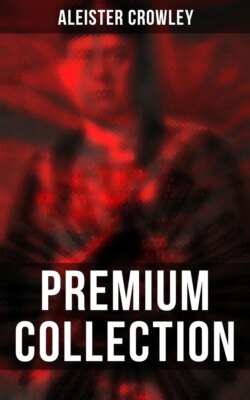Читать книгу ALEISTER CROWLEY - Premium Collection - Aleister Crowley - Страница 63
Chapter III.
The Altar
ОглавлениеThe Altar represents the solid basis of the work, the fixed Will28 of the Magician; and the law under which he works. Within this altar everything is kept, since everything is subject to law. Except the lamp.
According to some authorities the Altar should be made of oak to represent the stubbornness and rigidity of law; others would make it of Acacia, for Acacia is the symbol of resurrection.
The Altar is a double cube, which is a rough way of symbolizing the Great Work; for the doubling of the cube, like the squaring of the circle, was one of the great problems of antiquity. The surface of this Altar is composed of ten squares. The top is Kether, and the bottom Malkuth. The height of the Altar is equal to the height above the ground of the navel of the Magician. The Altar is connected with the Ark of the Covenant, Noah's Ark, the nave ("navis," a ship) of the Church, and many other symbols of antiquity, whose symbolism has been well worked out in an anonymous book called "The Cannon,"29 (Elkin Mathews), which should be studied carefully before constructing the Altar.
For this Altar must embody the Magician's knowledge of the laws of Nature, which are the laws through which he works.
He should endeavour to make geometrical constructions to symbolize cosmic measurements. For example, he may take the two diagonals as (say) the diameter of the sun. Then the side of the altar will be found to have a length equal to some other cosmic measure, a vesica drawn on the side some other, a "rood cross" within the vesica yet another. Each Magician should work out his own system of symbolism -- and he need not confine himself to cosmic measurements. He might, for example, find some relation to express the law of inverse squares.
The top of the Altar shall be covered with gold, and on this gold should be engraved some such figure as the Holy Oblation, or the New Jerusalem, or, if he have the skill, the Microcosm of Vitruvius, of which we give illustrations.
On the sides of the Altar are also sometimes drawn the great tablets of the elements, and the sigils of the holy elemental kings, as shown in The Equinox, No. VII; for these are syntheses of the forces of Nature. Yet these are rather special than general symbols, and this book purports to treat only of the grand principles of working.
